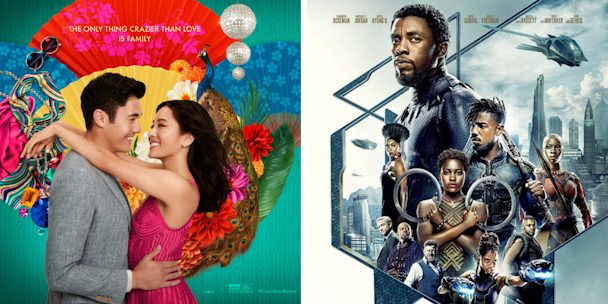The Oscars prove viewers vote for diversity with their wallets: pay attention advertisers
We are just days away from one of the biggest nights in the film calendar, The Academy Awards. Another year in which we’ll see the finest filmmaking talent take to the red carpet.

Brands can learn from the movie trends at the Oscars.
Last year, superhero film Black Panther pulled in $1.3bn in global box office takings, the second-highest grossing film of 2018, and now the ninth highest grossing film of all time. With an African-American director and a predominantly black cast, it also proved to be a game-changing blockbuster film in terms of representation and diversity.
More have followed – 2018’s Crazy Rich Asians was the first film by a major Hollywood studio to have an all-Asian cast and an Asian-American lead in 25 years and is now the sixth highest-grossing rom-com ever, and Roma’s Yalitza Aparicio is the first indigenous woman to be nominated for the Oscar for Best Actress. Moreover, awards season front-runner, The Favourite explores the nuances of different sexualities, as well as celebrating three powerful female leads.
A study by the Annenberg Inclusion Initiative showed what many of us already know well: women and people of colour have an incredible impact on the box office, despite historic underrepresentation and films failing the Bechdel test. Furthermore, recent research from UM reveals that 71% of a 2,000-respondent nationally representative sample said they feel TV and film have the power to challenge stereotypes, while 60% claimed to enjoy watching TV/film productions that have a diverse cast. Hollywood has been notoriously slow to adapt to social conversations around diversity and representation, but it is improving, and I believe that advertisers could learn a thing or two from this.
Now the Oscars is in its 91st year, it is fantastic that we are still celebrating film, and watching it transcend generations. It is even more brilliant that the industry is still in an extremely strong position. In fact, at the end of last year, UK cinema admissions totalled a staggering 177 million – the highest since 1970. Naturally, cinema has evolved a lot since then, from fresh faces and talent to the ground-breaking topics filmmakers choose to explore.
While we know that the world of advertising is one of bright ideas and creativity, advertisers need to take note of Hollywood and play catch up when it comes to diversity. It’s clear that audiences today are voting with their wallets and parting with cash to see diversity on screen, eager to hear new stories that are inclusive of different genders, race, sexuality or those with disabilities or mental health issues.
Brands and advertisers should take a cue from these inspirational films; there is no reason why advertising shouldn’t be as challenging as the films themselves. The industry should follow from the lead of trailblazers in this area, like Maltesers, who ran a series of successful campaigns covering issues from female inclusivity to disability, or Lloyd’s Bank’s award-winning campaign that opens up the conversation about mental health. The Royal Air Force is also taking a stand on this issue, last week launching its latest TV advert that challenges the gender stereotypes around women in advertising compared to the realities of women working on the frontline.
Consumers actively want to see brands develop content that pushes the boundaries, testing us and allowing us to ask difficult questions. Millennials, in particular, have the highest expectations for brands to take a stand on values, and this stance is now also increasing across older generations. This is also affecting where people choose to work, with young people wanting to work for companies that have a clear set of values.
We know that advertising has the potential to be an agent for social change. For years it has shaped our aspirations, inspiring us and influencing our buying behaviours. Like cinema, advertising is a form of storytelling, and can act as a conduit for a deeper message or to raise awareness. Told well, it can have an enormous impact on its audience, rallying us to acknowledge the issues it has raised and demanding we take notice, act on it and solve them.
So advertisers – take note and accept the challenge. We depend on it.
Kathryn Jacob OBE, is chief executive of Pearl & Dean
